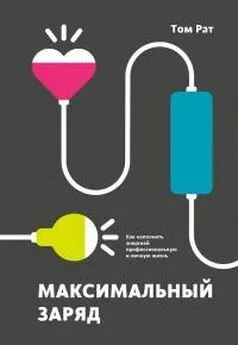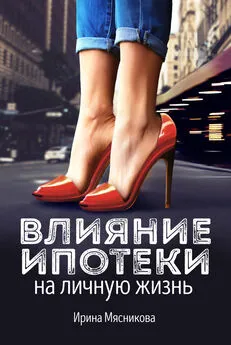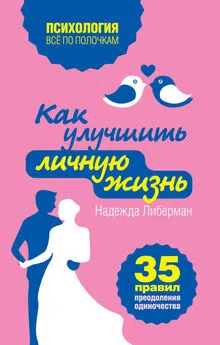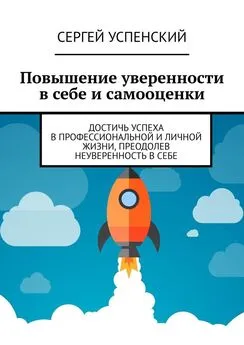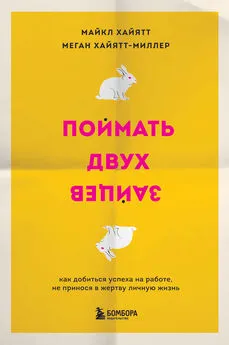Том Рат - Максимальный заряд. Как наполнить энергией профессиональную и личную жизнь
- Название:Максимальный заряд. Как наполнить энергией профессиональную и личную жизнь
- Автор:
- Жанр:
- Издательство:Манн, Иванов и Фербер
- Год:2019
- ISBN:978-5-00117-854-5
- Рейтинг:
- Избранное:Добавить в избранное
-
Отзывы:
-
Ваша оценка:
Том Рат - Максимальный заряд. Как наполнить энергией профессиональную и личную жизнь краткое содержание
На русском языке публикуется впервые.
Максимальный заряд. Как наполнить энергией профессиональную и личную жизнь - читать онлайн бесплатно ознакомительный отрывок
Интервал:
Закладка:
USDA Office of Communications. (2013, March 02). Chapter 2: Profiling food consumption on America. In Agricultural Fact Book 2001–2002. Retrieved from www.usda.gov/factbook/chapter2.htm.
United Nations Office on Drugs and Crime. (2010). World Drug Report 2010 (United Nations Publications, sales No. E.10.XI.13). Retrieved from www.erowid.org/psychoactives/statistics/statistics_unodc_world_drug_report_2010.pdf.
Wade, L. (2013, March 19). Sugary drinks linked to 180,000 deaths worldwide. CNN. Retrieved from www.cnn.com/2013/03/19/health/sugary-drinks-deaths/index.html.
Centers for Disease Control and Prevention (2012, January 13). Prescription drug overdoses — a U.S. epidemic. CDC Grand Rounds, 61(1), 10–13. Retrieved from www.cdc.gov/mmwr/preview/mmwrhtml/mm6101a3.htm.
American Association for the Advancement of Science. (2011, May 26). Cancer cells accelerate aging and inflammation in the body to drive tumor growth. Retrieved from www.eurekalert.org/pub_releases/2011-05/tjucca052611.php.
Liu, H., Huang, D., McArthur, D. L., Boros, L. G., Nissen, N., & Heaney, P. (2010). Fructose induces transketolase flux to promote pancreatic cancer growth. Cancer Research, 70, 6368–6376. doi:10.1158/0008-5472.CAN-09-4615.
Scientists link excess sugar to cancer. (2013, Februrary 1). Alpha Galileo. Retrieved from www.alphagalileo.org/ViewItem.aspx-?ItemId=128132&CultureCode=en.
Strawbridge, H. (2012, July 16). Artificial sweeteners: Sugar-free, but at what cost? Harvard Health Blog [Web log]. Retrieved from www.health.harvard.edu/blog/artificial-sweeteners-sugar-free-but-at-what-cost-201207165030.
Fowler, S. P., Williams, K., Resendez, R. G., Hunt, K. J., Hazuda, H. P., & Stern, M. P. (2008). Fueling the obesity epidemic? Artificially sweetened beverage use and long-term weight gain. Obesity, 16(8), 1894–1900. doi:10.1038/oby.2008.284.
Wansink, B. (2010). Mindless eating: Why we eat more than we think. New York: Bantam Books.
American Academy of Sleep Medicine. (2013, May 7). Study links diet with daytime sleepiness and alertness in healthy adults. [Press release]. Retrieved from www.aasmnet.org/articles.aspx?id=3869.
Wolpert, S. (2014, April 4). Does a junk food diet make you lazy? UCLA psychology study offers answers. (2014, April 4). [News release]. Retrieved from http://newsroom.ucla.edu/releases/does-a-junk-food-diet-make-you-lazy-uclap-sychology-study-offers-answer.
Blaisdell, A. P., Lau, Y. L., Telminova, E., Lim, H. C., Fan, B., Fast, C. D., … Pendergrass, D. C. (2014). Food quality and motivation: A refined low-fat diet induces obesity and impairs performance on a progressive ratio schedule of instrumental lever pressing in rats. Physiology and Behavior, 128. 220–225. doi:10.1016/j.physbeh.2014.02.025.
Kain, D. (2012, March 13). More trans fat consumption linked to greater aggression. [Press release]. Retrieved from ucsdnews.ucsd.edu/pressrelease/more_trans_fat_consumption_linked_to_greater_aggression/.
Golomb, B. A., Evans, M. A., White, H. L., & Dimsdale. J. E. (2012). Transfat consumption and aggression. PLoS ONE, 7(3), e32175. doi:10.1371/journal.pone.0032175.
Sánchez-Villegas, A., Toledo, E., de Irala, J., Ruiz-Canela, M., Pla-Vidal, J., & Martínez-González, M. A. (2012). Fast-food and commercial baked goods consumption and the risk of depression. Public Health Nutrition, 15, 424–432. doi:10.1017/S1368980011001856.
University of Otago. (2013, January 23). Otago study suggests many apples a day keep the blues at bay. [Press release]. Retrieved from www.otago.ac.nz/news/news/otago041054.html.
White, B. A., Horwath, C. C., & Conner, T. S. (2013). Many apples a day keep the blues away. Daily experiences of negative and positive affect and food consumption in young adults. British Journal of Health Psychology, 18, 782–798. doi:10.1111/bjhp.12021.
Глава 18
Owen, N., Bauman, A., & Brown, W. (2009). Too much sitting: A novel and important predictor of chronic disease risk? British Journal of Sports Medicine, 43, 81–83. doi:10.1136/bjsm.2008.055269.
Blaszczak-Boxe, A. (2014, July 8). Two hours of sitting cancels out 20 minutes of exercise, study finds. CBS News. Retrieved from www.cbsnews.com/news/two-hours-of-sitting-cancels-out-20-minutes-of-exercise-study-finds.
Matthews, C. E., George, S. M., Moore, S. C., Bowles, H. R., Blair, A., Park, Y., … & Schatzkin, A. (2012). Amount of time spent in sedentary behaviors and cause-specific mortality in US adults. American Journal of Clinical Nutrition, 95, 437–445. doi:10.3945/ajcn.111.019620.
Lee, I.-M., Shiroma, E. J., Lobelo, F., Puska, P., Blair, S. N., & Katzmarzyk, P. T. (2012). Effect of physical inactivity on major non-communicable diseases worldwide: An analysis of burden of disease and life expectancy. Lancet, 380(9838), 219–229. doi:10.1016/S0140-6736(12)61031-9.
Obese Americans get less than one minute of vigorous activity per day, research shows. (2014, February 12). Newswise. Retrieved from www.newswise.com/articles/obese-americans-get-less-than-one-minute-of-vigorous-activity-per-day-research-shows.
Archer, E., Lavie, C.J., McDonald, S.M., Thomas, D.M., Hébert, J.R., Taverno Ross, S. E., … Blair, S. N. (2013). Maternal inactivity: 45-year trends in mothers’ use of time. Mayo Clinic Proceedings, 88, 1368–1377. doi:10.1016/j.mayocp.2013.09.009.
Hellmich, N. (2012, August 13). Take a stand against sitting disease. USA Today. Retrieved from www.usatoday.com/news/health/story/2012-07-19/sitting-disease-questions-answers/57016756/1.
Pesola, A. J., Laukkanen, A., Tikkanen, O., Sipilä, S., Kainulainen, H., & Finni, T. (2014). Muscle inactivity is adversely associated with biomarkers in physically active adults. Medicine and Science in Sports and Exercise. doi:10.1249/MSS.0000000000000527.
Sitting is killing you. (2011, May 9). Medical Billing and Coding Certification. Retrieved from www.medicalbillingandcoding.org/sitting-kills.
Clarke, A. (2014, January 13). If you’re sitting down, you’re a sitting duck. Herald Sun. Retrieved from www.heraldsun.com.au/news/opinion/if-youre-sitting-down-youre-a-sitting-duck/story-fni0ffsx-1226800055731?nk=e49bb-7cecc0166e4593c7afebde8ead8.
Stairway to health. (n.d.). Retrieved from hsc.unm.edu/wellness/physical/stairs.html.
Ariga, A., & Lleras, A. (2011). Brief and rare mental “breaks” keep you focused: Deactivation and reactivation of task goals preempt vigilance decrements. Cognition, 118, 439–443. doi:10.1016/j.cognition.2010.12.007.
Stillman, J. (2012, July 18). Your desk is making you stupid. Retrieved from www.inc.com/jessica-stillman/be-smarter-get-up-and-walk-around.html.
Chang, B. (2014, June 13). Can exercise close the achievement gap? Retrieved from www.psmag.com/navigation/health-and-behavior/can-exercise-close-achievement-gap-83433.
Tine, M. (2014). Acute aerobic exercise: an intervention for the selective visual attention and reading comprehension of low-income adolescents. Frontiers in Psychology, 5, 575. doi:10.3389/fpsyg.2014.00575.
Widrich, L. (2014, February 4). What happens to our brains when we exercise and how it makes us happier. Retrieved from www.fastcompany.com/3025957/work-smart/what-happens-to-our-brains-when-we-exercise-and-how-it-makes-us-happier?
Bravata, D. M., Smith-Spangler, C., Sundaram, V., Gienger, A. L., Lin, N., Lewis, R., … & Sirard, J. R. (2007). Using pedometers to increase physical activity and improve health: A systematic review. Journal of the American Medical Association, 298, 2296–2304. doi:10.1001/jama.298.19.2296.
Dwyer, T., Ponsonby, A. L., Ukoumunne, O. C., Pezic, A., Venn, A., Dunstan, D., … Shaw, J. (2011). Association of change in daily step count over five years with insulin sensitivity and adiposity: population based cohort study. British Medical Journal, 342, c7249–c7249. doi:10.1136/bmj.c7249.
Sibold, J. S., & Berg, K. M. (2010). Mood enhancement persists for up to 12 hours following aerobic exercise: A pilot study. Perceptual and Motor Skills, 111(2), 333–342. doi:10.2466/02.06.13.15.PMS.111.5.333-342.
Knab, A. M., Shanley, R. A., Corbin, K., Jin, F., Sha, W., & Nieman, D. C. (2011). A 45-minute vigorous exercise bout increases metabolic rate for 19 hours. Medicine & Science in Sports & Exercise, 43(9), 1643–1648. doi:10.1249/MSS.0b013e3182118891.
Reynolds, G. (2014, April 30). Want to be more creative? Take a walk. [Web log]. Retrieved from well.blogs.nytimes.com/2014/04/30/want-to-be-more-creative-take-a-walk/?_php=true&_type=blogs&_php=true&_type=blogs&smid=tw-nytimeshealth&seid=auto&_r=1&&utm_content=buffera57a0&utm_medium=social&utm_source=twitter.com&utm_campaign=buffer.
Lenneville, E. (2013, June 6). Why do I think better after I exercise? Scientific American. Retrieved from www.scientificamerican.com/article/why-do-you-think-better-after-walk-exercise.
Глава 19
Fryer, B. (2006, October) Sleep deficit: The performance killer. Harvard Business Review. Retrieved from hbr.org/2006/10/sleep-deficit-the-performance-killer/ar/1#.
Ericsson, K. A., Krampe, R. T., & Tesch-Römer, C. (1993). The role of deliberate practice in the acquisition of expert performance. Psychological Review, 100(3), 363–406. doi:10.1037/0033-295X.100.3.363.
National Sleep Foundation. (2013). National Sleep Foundation poll finds exercise key to good sleep. Retrieved December 22, 2014, from www.sleepfoundation.org/alert/national-sleep-foundation-poll-finds-exercise-key-goodsleep.
Schwartz, T. (2013, February 9). Relax! You’ll be more productive. New York Times. Retrieved from www.nytimes.com/2013/02/10/opinion/sunday/relax-youll-be-more-productive.html.
Kessler, R. C., Berglund, P. A., Coulouvrat, C., Hajak, G., Roth, T., Shahly, V., … & Walsh, J. K. (2011). Insomnia and the performance of US workers: Results from the America Insomnia Survey. Sleep, 34, 1161–1171. doi:10.5665/SLEEP.1230.
High cost of insomnia may be a wake-up call. (2011, September 1). USA Today. Retrieved from usatoday30.usatoday.com/news/health/story/health/story/2011-09-01/high-cost-of-insomnia-may-be-a-wake-up-call/50220690/1.
Agus, D. B. (2011). The end of illness. New York: Free Press.
Luckhaupt, S. E. (2012). Short sleep duration among workers: United States, 2010. Morbidity & Mortality Weekly Report, 61(16), 281–285.
Sleepy drivers as dangerous as drunk ones. (2012, May 31). Foxnews.com. Retrieved from www.foxnews.com/health/2012/05/31/study-sleepy-drivers-equally-as-dangerous-as-drunken-drivers.
Cohen, S., Doyle, W. J., Alper, C. M., Janicki-Deverts, D., & Turner, R. B. (2009). Sleep habits and susceptibility to the common cold. Archives of Internal Medicine, 169(1), 62–67. doi:10.1001/archinternmed.2008.505.
O’Connor, A. (2012, September 10). Really? Using a computer before bed can disrupt sleep. New York Times: Well. [Web log]. Retrieved September 28, 2012, from well.blogs.nytimes.com/2012/09/10/really-using-a-computer-before-bed-can-disrupt-sleep.
University of Florida, Warrington College of Business Administration. (n.d.). Late-night smartphone use has detrimental effects on next-day work productivity. [Press release]. Retrieved from news.warrington.ufl.edu/faculty/late-night-smartphone-use-has-detrimental-effects-on-next-day-work-productivity.
Lanaj, K., Johnson, R. E., & Barnes, C. M. (2014). Beginning the workday yet already depleted? Consequences of late-night smartphone use and sleep. Organizational Behavior and Human Decision Processes, 124, 11–23. doi:10.1016/j.obhdp.2014.01.001.
Wood, B., Rea, M. S., Plitnick, B., & Figueiro, M. G. (2012). Light level and duration of exposure determine the impact of self-luminous tablets on melatonin suppression. Applied Ergonomics, 44, 237–240. doi:10.1016/j.apergo.2012.07.008.
Читать дальшеИнтервал:
Закладка:
